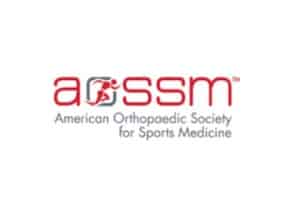
BACKGROUND:
Recurrent instability after surgical stabilization of the shoulder is uncommon. Although results of open revision stabilization procedures have been reported, only 3 studies have evaluated the outcome of arthroscopic revision surgery.
PURPOSE:
To analyze results of arthroscopic revision anterior shoulder reconstruction at the authors’ institution.
STUDY DESIGN:
Case series; Level of evidence, 4.
METHODS:
Chart review identified 18 shoulders that had arthroscopic revision anterior shoulder reconstruction at the Southern California Orthopedic Institute between November 4, 1997, and May 14, 2002. Anterior reconstruction of the shoulder was performed using suture anchors and nonabsorbable sutures. In most patients, posterior capsular plication was also performed; in 1 patient, closure of the rotator interval was performed. Sixteen shoulders in 15 patients were examined and 1 patient who required revision surgery was interviewed at a mean of 38 months (range, 24-67 months) after arthroscopic revision anterior shoulder reconstruction. The patient population consisted of 13 men and 3 women whose age at surgery was between 17 and 55 years (mean, 30 years; SD, 11.9 years). Patient satisfaction, the Simple Shoulder Test, and the Rowe scale were used to measure outcome.
RESULTS:
Prior surgeries included 10 arthroscopic procedures in 9 shoulders and 10 open procedures in 8 shoulders. In this study group, 1 patient dislocated his shoulder 4 months after arthroscopic revision anterior shoulder reconstruction during an altercation and subsequently underwent a Bristow procedure. Of the remaining cases, none of the 16 shoulders had recurrence of dislocation or subluxation; all 15 patients were satisfied with their revision surgeries. Among this group, the Simple Shoulder Test responses improved from 8.3 yes responses to 11.3 after arthroscopic revision anterior shoulder reconstruction (P < .05). Using the Rowe scale, there were 9 excellent, 4 good, and 3 fair results. Mean Rowe score at follow-up was 83.8 (range, 55-100; SD, 14.7) for these 16 shoulders.
CONCLUSION:
In this series, 94% of shoulders were stable after arthroscopic revision anterior shoulder reconstruction, and there were a high number of good and excellent outcomes. Results suggest arthroscopic revision anterior shoulder reconstruction using suture anchors is a viable treatment alternative for patients with failed anterior shoulder reconstructions.
Full Article: Results of Arthroscopic Revision Anterior Shoulder Reconstruction
